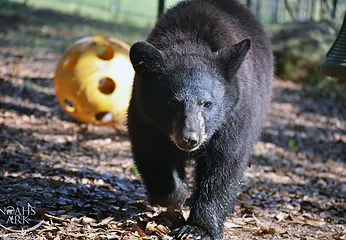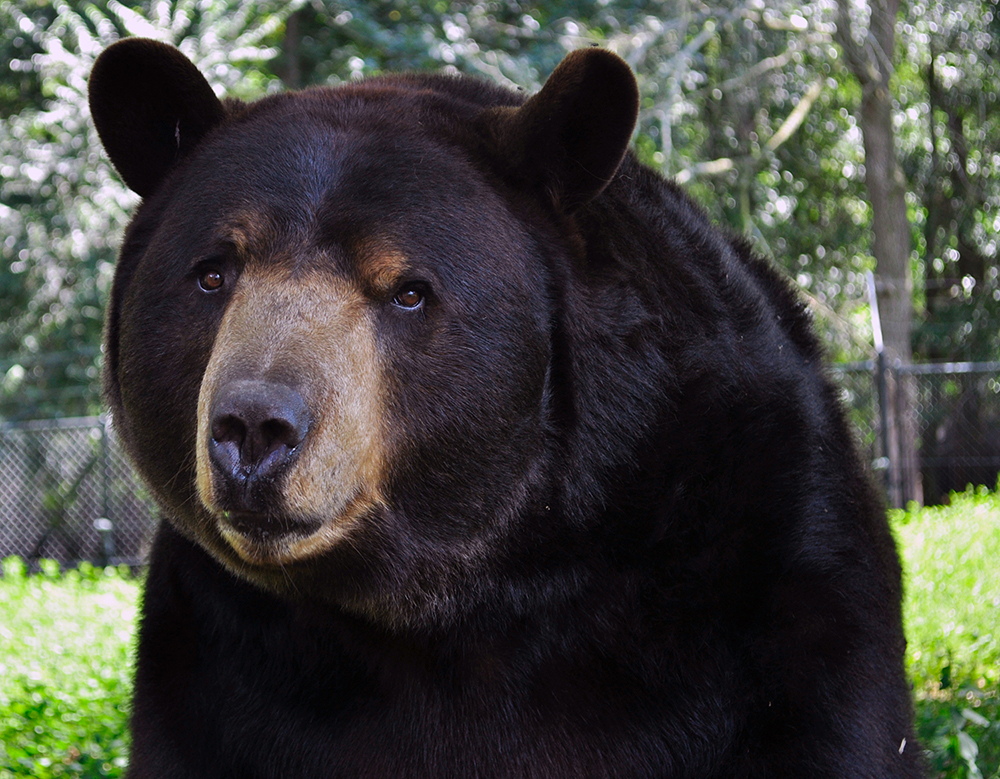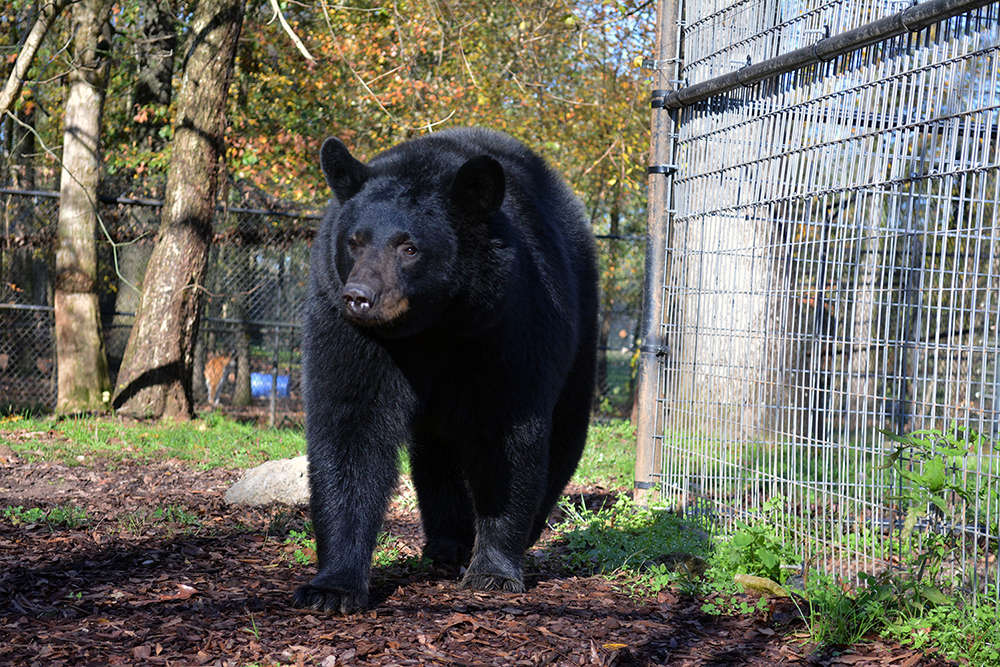Black bears are native to many parts of North America and are skilled at foraging, hunting, climbing, and swimming. Despite habitat loss and increasing number of human/bear conflicts they continue to have a conservation status of ‘least concerned.’ these resourceful bears inhabit forests of at least 40 of the 50 states, including all states in the Southeastern U.S. The coat of a Black Bear is shaggy and usually black but it can also be dark brown, cinnamon, or yellow-brown. American Black Bears are omnivores. Most of their diet is plant based. American Black Bears mainly feed on vegetation including herbs, grasses, roots, buds, shoots, honey, nuts, fruit, berries and seeds. They will also eat fish, small mammals, insects, dead animals and garbage. Their size varies greatly depending on geographic location and available food sources, with full-grown bears ranging in size from 150-800 LBS. The average adult female weighs 250-400 LBS and males 400-550 LBS. Although large animals, black bears are surprisingly quick and agile. They can sprint up to 35 miles per hour and climb 100 feet up a tree within 30 seconds.
Hours of Operation:
Tuesday – Sunday 10:00am – 3:30pm, weather permitting
Last ticket sold at 3:00pm
770-957-0888 | Directions





